How to Start a Clothing Brand in the UK- Complete Guide

Don’t know how to start a clothing line in the UK? You’re definitely not alone—and you’ve come to the right place. Thinking about how to start a clothing brand these days can feel overwhelming with everything changing so fast, but that’s where we come in.
RVS Media has been around the block when it comes to eCommerce website development, and we’re all about helping people like you turn that initial spark of an idea into something real (and profitable). Whether you’re just dreaming up designs or already thinking about launch day, we’ll walk you through the whole thing—step by step, start to finish.
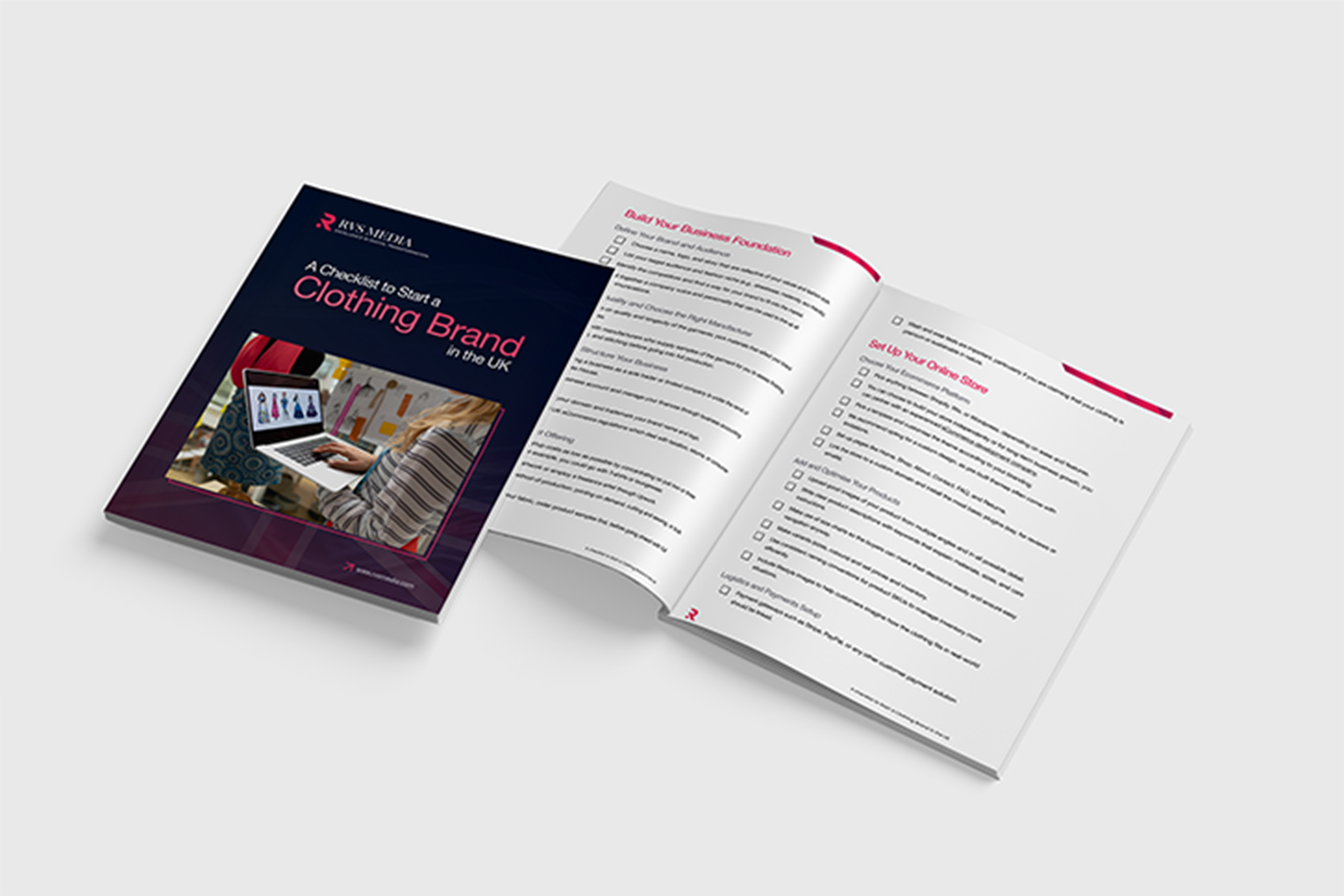
Download our Free Step-by-Step Guide to Launch Your Own Clothing Brand in the UK.
The UK Fashion Landscape: A Lucrative Opportunity in 2025
The UK fashion scene? Still going strong—and honestly, kind of thriving, even with all the changes happening around the world. It’s one of those industries that just keeps moving, with billions still flowing through it every year. So, if you’re thinking about How to Start a Clothing Brand in the UK, you’re definitely not chasing a dead-end. In fact, it might be one of the smartest (and most exciting) moves you could make.
What’s even more interesting is how people are shopping these days. Online is the go-to now, and there’s a real shift happening toward sustainable and ethical fashion. More and more consumers want to support brands that actually care, which opens up some pretty cool opportunities if you’re just getting started.
But let’s be real—starting a clothing line isn’t as simple as tossing up a website and calling it a day. There’s a lot more to it. You’ve gotta have a solid plan, yeah, but also that drive to keep going when things get messy (because they probably will at some point). It takes work, passion, and a whole lot of patience.
That’s why we threw this guide together—to take some of the guesswork out of the process. No fluff, just real steps to help you actually get your brand going here in the UK. So, if you’re ready to roll up your sleeves, let’s jump in.
How to Start a Clothing Brand in the UK
So, you’ve got an idea—maybe it’s a cool online shop or a cosy little boutique on a busy street. Either way, the basics don’t really change. Starting a online clothing brand in the UK that actually works comes down to making smart money moves, planning ahead, and knowing what the legal landscape looks like. Let’s walk through the process of how to start a clothing brand in the UK.
Select Your Business Model
Alright, before you get carried away sketching logos or ordering fabric swatches, take a second to think about the actual business side of things. Like—how are you planning to make money from this idea? Your business model pretty much sets the tone for everything else: how much you’ll need to spend upfront, how you’ll handle orders, and even how you’ll run day-to-day stuff.
Here are a few models that a lot of new brands are going into in 2025:
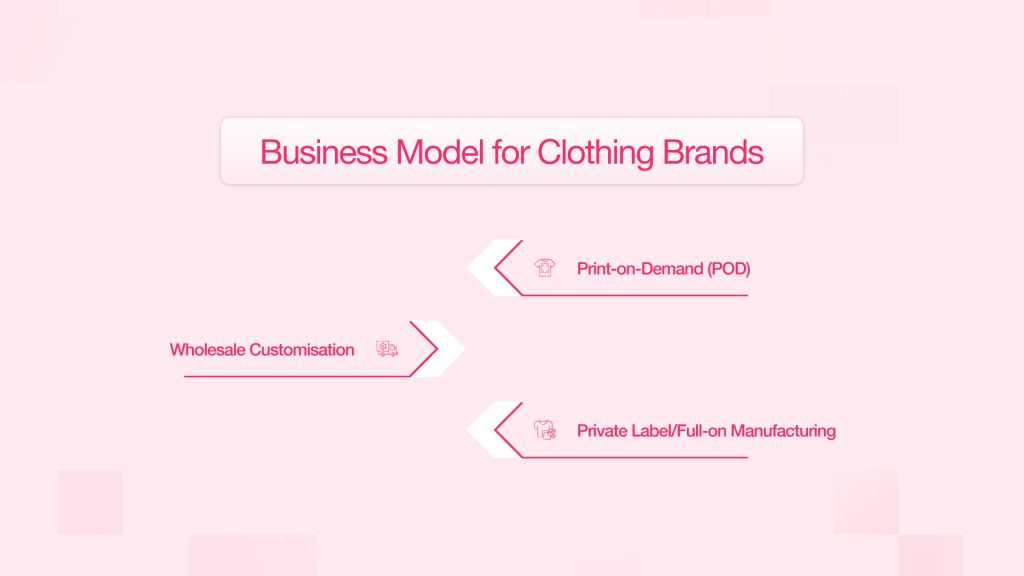
Print-on-Demand (POD)
Just starting out or not totally sure what’ll sell? POD might be your best friend. Basically, you upload your designs, and when someone places an order, it gets printed and shipped—no stock, no storage, no bulk buying.
You don’t need a warehouse or anything fancy. Sites like Shopify and Etsy can hook right into POD platforms, so managing everything is pretty hands-off. It’s perfect if you want to test the waters or sell one-off, personalised stuff without putting in a ton of cash upfront.
Wholesale Customisation
Now, if you want a bit more control over what people get in their hands, this might be a better fit. Here’s how it works: you buy blank clothes in bulk—t-shirts, hoodies, whatever—and add your own designs with printing, embroidery, or whatever technique fits your vibe.
It’ll cost more to get started (since you’re actually holding inventory), and you might need to work with a printing company or even invest in some gear. But the trade-off? Higher quality, better margins, and a more “hands-on” brand feel.
Private Label/Full-on Manufacturing
It’s where serious brands build serious stuff. If you’re going the private label route, you’re designing your own pieces from scratch. You’ll be picking fabrics, working with manufacturers, and calling all the shots. It’s not cheap, and it definitely takes time, but the final product is 100% you.
If you’ve got a clear vision and the budget to back it up, this model gives you the most control and the biggest potential for long-term growth. Just be ready to really roll up your sleeves.
Find Your Niche: Don’t Try to Be Everything to Everyone
The UK fashion space is packed. You’re not just dropping clothes into an empty market. So, if you’re offering the same stuff as everyone else, it’s gonna be a tough climb.
If you are serious about learning how to start a clothing brand in the UK, picking a niche really helps. Like, really zooming in on a specific style, audience, or vibe that you genuinely care about.
There are loads of directions you can go—eco-conscious fashion, retro streetwear, modest looks, plus-size collections, adaptive clothing, and kidswear. You get the idea. The goal isn’t just to be different, but to connect with a group of people who need what you’re offering—and maybe aren’t getting it elsewhere.
Here’s why this matters so much:
- You’ll stand out – If you’re not trying to please everyone, you can focus on speaking directly to your people. That builds loyalty.
- Less head-to-head competition – No need to go toe-to-toe with high-street giants. You’re playing a different game.
- Decisions get easier – Once you’ve nailed your niche, things like branding, design choices, and marketing don’t feel so overwhelming.
Budget Smart, Not Big: Work with What You’ve Got
You don’t need to throw tens of thousands at this to get rolling. You can absolutely start a clothing brand in the UK without going broke. Some folks get things going with just a few grand. Seriously.
The key is flexibility. Market trends shift, stuff happens, and opportunities pop up out of nowhere. So, while you want to plan carefully, you’ve also gotta leave room to pivot if something changes.
Here are the big things to budget for:
- Product or stock: Probably your biggest cost upfront. You don’t need 50 designs—start with a tight, focused lineup.
- Your website: This is your storefront, even if it’s online. Make it clean, easy to use, and actually enjoyable to shop on.
- Marketing: Develop a marketing strategy Whether it’s ads, social media marketing, or getting someone with influencer to wear your stuff, you’ll need to spend something to get eyes on your brand.
- Photos: Good product photos = better sales. It’s just how it works.
- Shipping & packaging: It’s not glamorous, but it’s essential. You’ve gotta factor it in from day one.
- Legal stuff & insurance: Boring, yes. Necessary, also yes.
- A little cushion: Always leave some money for the unexpected. Things break, trends shift, and random expenses pop up.
You don’t need to go all in with a massive budget. Start small, build smart, and grow as your sales start coming in. Quality over quantity—especially in the early days—is the name of the game.
Naming Your Brand
Brand name is the first thing people hear, the first thing they see, and honestly, it sets the vibe for everything that follows. A good name can stick in someone’s mind long after they’ve scrolled past. A forgettable one is a missed opportunity.
You want something that feels like you, that stands out and actually makes sense for the kind of stuff you’re selling. Easier said than done, right? Don’t worry—we’ve got some tips to help you land on something that clicks.
How to Come Up with a Name
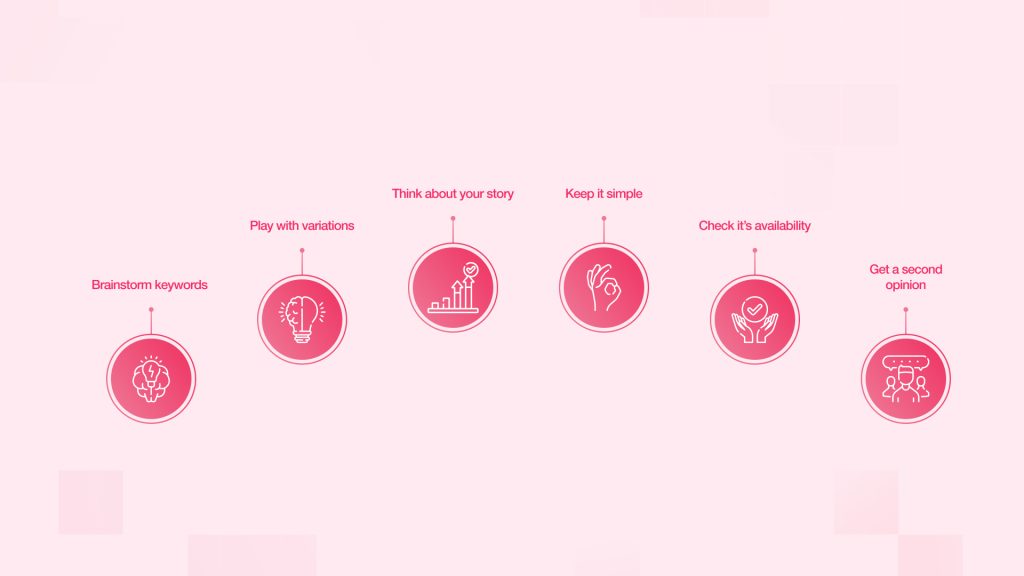
- Brainstorm Keywords: Write down anything that comes to mind—words tied to your niche, your values, what you stand for, or even what your target customer base might care about.
- Play around with variations: Use some name-generator tools online. Sometimes a twist on a word or a mashup of two concepts sparks something cool.
- Think about your story: Is there a personal reason you started this brand? A mission you believe in? If there’s a deeper meaning, weaving that into your name can really connect with people.
- Keep it simple: If people can’t spell it, pronounce it, or remember it, they’re probably not gonna Google it later.
- Check what’s available: Make sure the domain name isn’t taken, and look up social handles too. Oh—and check for trademarks in the UK before you fall in love with a name that’s already off the table.
- Get a second opinion: Ask people—especially the kind of people who’d buy your stuff. Does the name make sense to them? Does it feel right?
Once you’ve got that perfect name locked in, don’t wait around. Buy the domain, grab the social handles, and get it registered officially. You’ll want to check with the UK Intellectual Property Office to make sure it’s clear for trademarking too.
Naming your brand can be a little stressful, sure—but when it clicks, you’ll feel it. And that’s when things really start to get exciting.
Get Your Online Store Up and Running
In 2025, having a solid online presence isn’t just “nice to have.” It’s essential. Most people in the UK are doing their shopping from their phones or laptops these days, so your website? That’s your storefront. It’s where the magic happens.
Now, setting up your eCommerce store might sound a bit overwhelming at first, but it doesn’t have to be. The key is to keep it simple, smart, and user-friendly. Here’s what to focus on:
Pick the Right Platform
There are a bunch of platforms out there—Shopify, BigCommerce, WooCommerce (if you’re using WordPress), Magento… the list goes on. They all come with their own strengths. Some are super easy to set up, and others are better for scaling big. Take a bit of time to compare features, costs, and how they fit with your skill level (or the help you’ve got on hand).
Make It Easy to Use
Your site should be a breeze to browse. People don’t want to click around forever trying to find your sizing chart or how to check out. Keep things clean, mobile-friendly, and fast. If it’s confusing, folks will bounce.
Use Great Photos
People can’t touch or try on your clothes online, so your product photos have to do all the heavy lifting. Invest in good lighting, clean backgrounds, and maybe some lifestyle shots that show your clothes out in the real world.
Don’t Skip the Details
Include clear info on sizing, fabric, care instructions, and anything else someone might need to make a confident purchase. Bonus points if you can share what makes the item special—like if it’s sustainably made or has a cool design story.
Offer Secure, Flexible Payments
Give people payment options using payment gateways they know and trust—PayPal, credit cards, Apple Pay, Klarna, whatever makes sense for your audience. Security and convenience go a long way in getting those sales across the finish line.
Make Support Easy to Find
Live chat, a helpful FAQ section, or even just an easy-to-find contact form can make a big difference. People want to know they can reach you if something goes wrong or if they’ve got a quick question.
Think About SEO
You want your site to show up when people Google things like “sustainable UK streetwear” or “indie kids’ clothing brand in the UK.” That means using the right keywords, having clear navigation, and writing product descriptions that search engines (and humans) can understand.
Need a Highly Profitable Clothing Website – Prices From Just £500!
We Can Help
Build a Brand That’s More Than Just Clothes
Here’s the thing: in fashion, you’re not just selling clothes. You’re selling a vibe. A lifestyle. A story people want to be part of.
Think about it—why do people happily drop £40 on a Nike tee when they could get something similar for cheaper? It’s not just the swoosh. It’s what the brand represents. That emotional connection? That’s what makes all the difference.
So, if you want your clothing line to actually stand out, you’ve gotta build a brand that feels real and sticks with people. Here’s how to start:
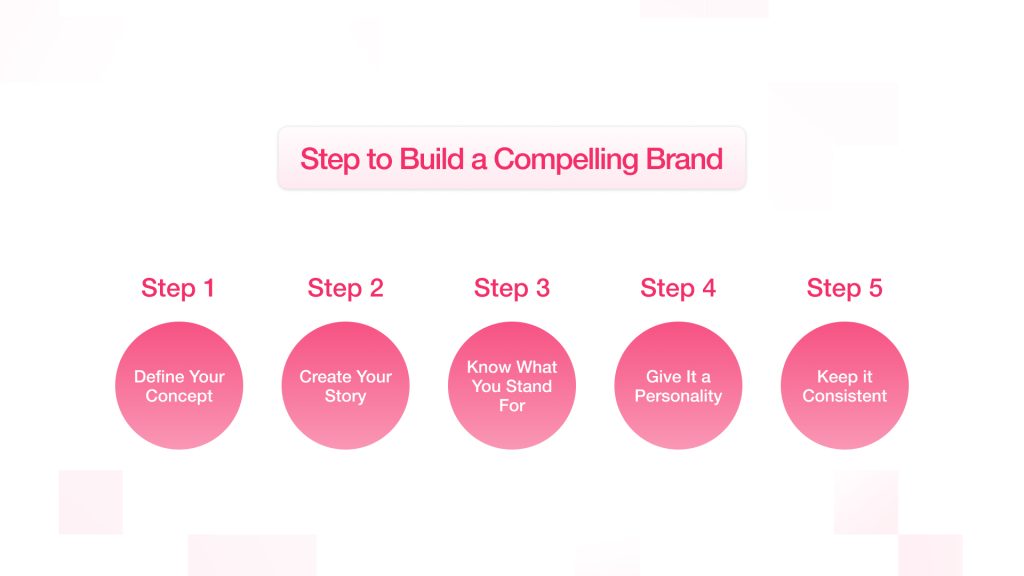
Get Clear on Your Concept
Ask yourself—what’s your brand actually about? Is it all about sleek, minimalist pieces? Loud prints and bold colours? Maybe it’s about being super size-inclusive or using only sustainable materials. Whatever it is, that core idea will help guide everything else.
Tell Your Story
Why did you start this in the first place? Was there a moment that made you say, “Okay, I’m doing this”? Maybe you saw a gap in the market or wanted to make clothes people like you could finally relate to. Don’t be afraid to share it—people love hearing the real story behind the brand.
Know What You Stand For
What values drive your business? Maybe you’re big on ethical production, or you give back to local communities, or you’re all about slow fashion. Whatever it is, make it part of your message. People care about this stuff more than ever.
Give It a Personality
If your brand were a person, who would it be? Chill and laid-back? Edgy and a little rebellious? Polished and chic? Your tone of voice, your photos, your packaging—it should all reflect that vibe.
Keep It All Consistent
Once you’ve nailed down your look and feel—your logo, fonts, colours, the way you speak—stick to it across everything. Your website, your Insta feed, your packaging… it should all feel like it’s coming from the same place. That kind of consistency makes your brand feel strong and trustworthy.
If this part feels a little out of your depth, that’s totally okay. A good branding agency (or even a freelance designer) can help pull everything together in a way that makes sense for your audience—and your vision. But even if you’re doing it solo, just start small and stay true to your message. People notice that.
Navigate Legal Formalities
It’s not the most exciting part of starting a clothing brand in the UK—but it’s 100% necessary. If you want to run your business properly (and avoid future headaches), you’ve got to make sure you’re ticking all the right boxes.
Here’s what you need to keep in mind:
Register Your Business
First things first—you need to officially register your business. If you’re going solo, you’ll likely register as a sole trader through HMRC. If you’re setting up a limited company, you’ll go through Companies House. Either way, get this sorted early on.
Licenses
If you’re only selling online, the good news: you usually don’t need a specific license in the UK. But—if you’re planning to sell at markets, pop-ups, or other events in person, you may need a stall license from your local council. Always double-check with them, just in case.
Your Products Need to Be Safe (and Legal)
Clothing isn’t just about looking good—it also has to meet certain safety and quality standards, especially if you’re selling kids’ stuff. These are the big ones to know:
- Consumer Rights Act 2015 – Basically, your clothes have to be good quality, match the description, and actually be fit for wearing.
- Product Safety Regs – Make sure everything meets UK safety rules. This is extra important if you’re selling children’s wear—things like flammability standards really matter here.
- Labeling – Yep, labels matter too. You’ve gotta clearly show care instructions, materials used (e.g. 100% cotton), and where the item was made.
Protect What You’re Creating
Your designs, your brand name, your logo—this is your intellectual property. And if you’ve worked hard to create something original, you’ll want to protect it. You can look into trademarks and design rights to keep your ideas safe from copycats.
One last thing—just because someone else made your products (like a manufacturer or supplier) doesn’t mean you’re off the hook. As the seller, you’re still the one legally responsible for making sure everything you sell meets UK standards. So yeah, double-check everything.
It’s not the most glamorous part of the process, but getting the legal stuff right from the beginning will save you loads of stress down the line.
Secure Essential Business Insurance
Insurance might not be the most thrilling part of building your brand, but it’s one of those “better safe than sorry” things you really don’t want to skip. When you’re pouring time, money, and energy into a clothing line, you want to make sure you’re protected if things ever go sideways.
So, what kind of insurance should you actually be looking at? Here are the main ones worth considering:
Public Liability Insurance
If you’re ever dealing with customers face-to-face—like at markets, pop-ups, or even running your own store—this one’s a must. It covers you if someone gets hurt or their stuff gets damaged because of your business. Like, say someone trips over a clothing rack at your stall—this is what would have your back.
Product Liability Insurance
This is big for anyone selling physical products, especially clothes. If something you sell ends up causing harm—maybe a stitching issue causes a cut or someone has a bad skin reaction to a fabric—you could be held responsible. Product liability insurance helps protect you in situations like that.
Professional Indemnity Insurance
This one’s not super common for fashion brands, but it can be useful if you’re offering styling services, consultations, or custom design advice. It covers you if someone claims your advice or service caused them a loss or issue.
Business Contents Insurance
Think of this like home insurance but for your business stuff. If your stock, sewing machines, laptop, or anything else gets stolen or damaged—this is the policy that’ll help you replace it.
Which policies you’ll actually need depends on how you’re running things. Are you fully online? Doing in-person events? Have a studio or shop? That all plays into it. It’s a good idea to chat with an insurance broker who can walk you through your options and help you tailor the coverage to fit your setup.
Insurance isn’t exciting but skipping it can be expensive. Get yourself covered—you’ll sleep better knowing you’re protected.
Partner With the Right Manufacture
Whether you’re starting small with a handful of pieces or you’ve got big plans to scale fast, one thing’s for sure—choosing the right manufacturer is a huge deal. Seriously, this is one of those decisions that can make or break your brand early on.
The people who bring your designs to life? They directly affect your product quality, your costs, and how quickly you can deliver to your customers. So yeah, it’s worth taking your time here.
Manufacturing Models
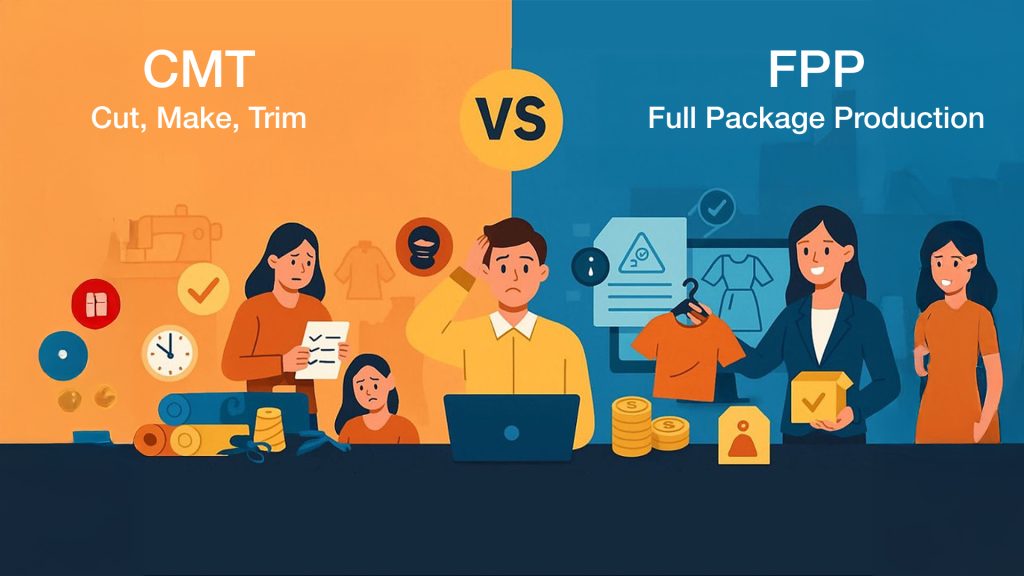
CMT (Cut, Make, Trim): This model’s a good pick if you want more control. You handle the designs, patterns, and materials, and the manufacturer takes care of stitching everything together. You’re more involved in the process, which means a bit more legwork, but you also get to choose exactly what materials go into your pieces.
FPP (Full Package Production): Think of this as the hands-off option. The manufacturer handles everything—sourcing the fabric, cutting, sewing, the whole lot. It costs more upfront, but it saves you loads of time and is great if you’re not deep into the technical side of production yet.
How to Actually Find a Manufacturer You Can Trust
- Do Your Research: Start by looking for manufacturers that work within your niche—whether that’s activewear, ethical fashion, streetwear, or whatever. The more aligned they are with your product, the better.
- Ask Around: If you’ve got any industry contacts, now’s the time to use them. A good referral from someone who’s been through it is worth gold.
- Always Order Samples First: You need to see (and feel) what the manufacturer is capable of before committing to a full run. Check the stitching, fit, fabric—everything.
- Visit If You Can: If the manufacturer is nearby, try to visit. It gives you a real sense of how they work, what their team’s like, and how your stuff’s going to be made. It’s also a great way to spot any red flags early.
- Local vs. Overseas: There’s definitely something to be said for keeping production close to home. UK manufacturers can offer quicker turnaround times, better communication, and of course, that “Made in the UK” label that many shoppers love. It might cost more, but the benefits can be totally worth it.
- Communication Is Everything: No matter where your manufacturer is, clear, regular communication is key. Be upfront about your expectations, timelines, and customer feedback. A solid relationship here will save you so many headaches down the line.
Finding the right manufacturing partner can take a bit of trial and error, but once you lock in someone reliable, it makes everything easier.
Time to Launch!
After you’ve got your products ready, your site’s up… now what? Time to actually launch this thing.
Pricing
Figure out what makes sense. It needs to cover your costs, make you some money, but also not scare people off. It’s a bit of a balancing act, and you might tweak it as you go.
Get People Talking
Don’t just post once and hope for the best. Start dropping hints. Post behind-the-scenes stuff. Maybe a countdown, or give early access to people on your email list. You don’t need to overthink it—just start building some interest before launch day sneaks up.
Go Big on Digital
SEO for ecommerce site make sures that people can actually find you. Be active where your audience hangs out—Instagram, TikTok, Pinterest, etc. Team up with influencers, run some targeted ads, and start growing that email list with juicy offers.
Launch Offers That Actually Tempt People
Throw in free shipping, a little discount, or a bundle deal—something that nudges folks to stop browsing and actually hit “buy.” Doesn’t have to be massive, just enough to sweeten the deal.
Make Your Packaging Count
Don’t just chuck your stuff in a plain box. The packaging is part of the whole vibe. Make it feel like a treat to open—people remember that kind of thing (and share it).
Get Shipping Sorted
Shipping can make or break the experience. Work with someone reliable so your orders show up on time and in good shape. Nothing worse than a great product arriving late and crumpled.
Get your First Clothing Website at Just £500!
To Know More!
Grow and Scale
After you’ve launched your clothing line in the UK. But the truth is, launch day is just the beginning. Now it’s time to think about what’s next and how to keep things growing without burning out.
Look at What’s Working
Take time to actually dig into your numbers. Which products are flying off the shelves? What’s getting ignored? Check your site traffic, read the reviews, and listen to your customers. The data’s there—you just have to pay attention to it.
Grow Your Line
Once you’ve got some momentum, think about adding new pieces or collections. Don’t rush it—just expand in ways that make sense for your brand and your people.
Try New Avenues
Could you do a pop-up shop? Team up with another brand? Maybe even dip your toes into wholesale? There are loads of ways to get your stuff in front of more people.
Customer Loyalty
People who buy from you more than once. Keep them happy with great service, quality they can count on, and maybe a little loyalty reward here and there. Word-of-mouth still goes a long way in increasing loyal customer.
Adaptability
Fashion changes fast. What’s trending one season might be out the next. Keep an eye on shifts in style, tech, and how people shop. The brands that last are the ones that evolve without losing who they are.
Download a step-by-step guide on how to start a clothing brand in the UK.
Conclusion
How to Start a Clothing brand in the UK in 2025? it’s one of the most exciting times to jump in. Whether you’re just sketching out ideas or already halfway through your setup, you’ve now got a solid roadmap to work from.
We’ve covered the big stuff—business models, finding your niche, getting online, creating a marketing plan like a pro, and making sure you’re legally buttoned up. It’s a lot, we know. But with the right plan, some creativity, and a little patience, you’re more than capable of building something amazing.
And hey, if you could use some backup—whether it’s building a sleek online store, figuring out SEO, or just getting your brand out there—we’ve got a team for that. No pressure, but if you ever need help, RVS Media here.
 Shopify
Shopify

















